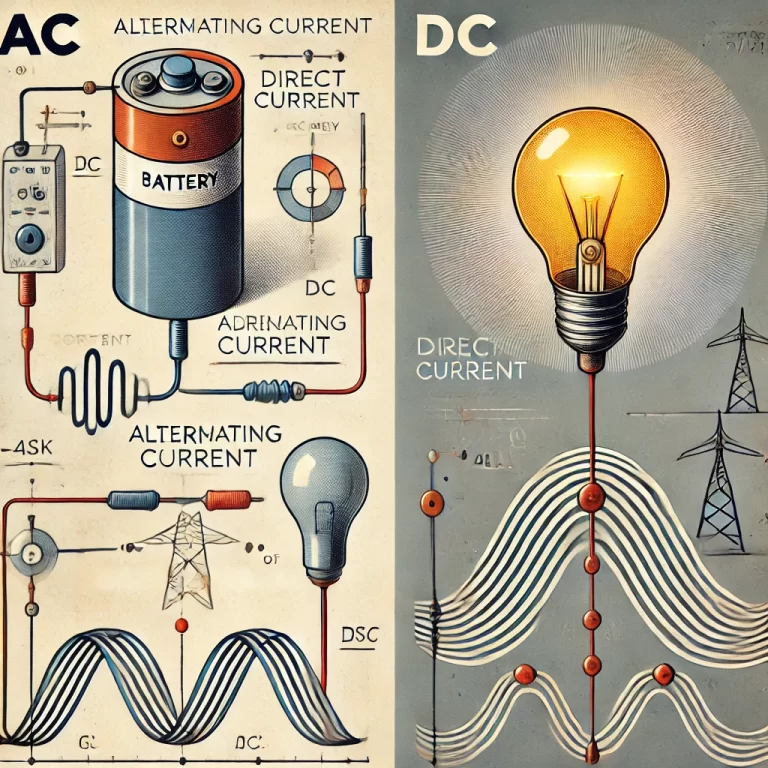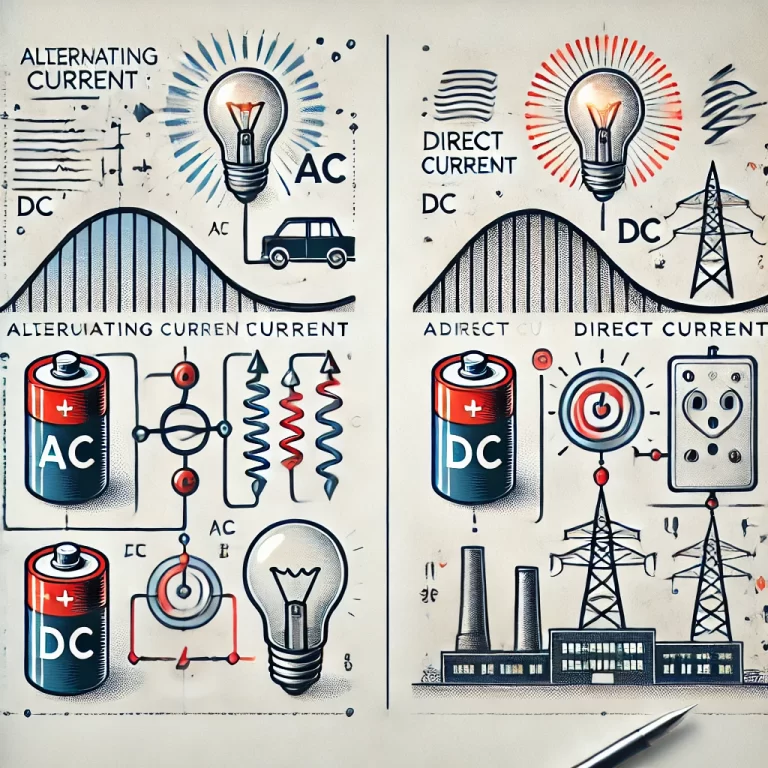Electricity is the cornerstone of modern civilization, powering everything from household appliances to industrial machinery. At the core of electrical systems are two fundamental types of electrical current: Alternating Current (AC) and Direct Current (DC). Understanding their differences, advantages, and applications is crucial in the fields of electrical engineering and technology.
What is Direct Current (DC)?
Direct Current (DC) refers to the flow of electric charge in a single, constant direction. This type of current is produced by sources such as batteries, solar cells, and DC generators. In a DC circuit, electrons move steadily from the negative terminal to the positive terminal, resulting in a stable voltage output.
Key Characteristics of DC:
Unidirectional Flow: The electric charge flows in one consistent direction.
Stable Voltage: DC provides a constant voltage, which makes it ideal for sensitive electronic devices.
Energy Storage Compatibility: Batteries and other energy storage systems naturally produce DC power.
Applications of DC:
Electronics: Most consumer electronics, such as smartphones, laptops, and LED lighting, operate on DC power.
Electric Vehicles: EVs utilize DC power for battery storage and motor operation.
Renewable Energy: Solar panels generate DC electricity, which is often converted to AC for household use.

What is Alternating Current (AC)?
Alternating Current (AC) is characterized by the periodic reversal of direction in which the electric charge flows. In most AC systems, the current changes direction in a sinusoidal pattern, meaning the voltage oscillates between positive and negative values. This type of current is generated by power stations and delivered to homes and businesses through the electrical grid.
Key Characteristics of AC:
Bidirectional Flow: The electric current reverses direction periodically.
Variable Voltage: The voltage alternates between positive and negative, typically following a sine wave pattern.
Efficient Transmission: AC can be easily transformed to higher or lower voltages using transformers, making it more efficient for long-distance power transmission.
Applications of AC:
Power Grids: National and regional power grids distribute electricity in AC form.
Household Appliances: Devices like refrigerators, air conditioners, and washing machines operate on AC power.
Industrial Equipment: AC motors and heavy machinery in factories use AC due to its high power capability.
Key Differences Between AC and DC
| Feature | Alternating Current (AC) | Direct Current (DC) |
|---|---|---|
| Flow Direction | Changes direction periodically | Flows in one direction |
| Voltage Behavior | Alternates between positive and negative | Constant or slowly varying voltage |
| Transmission | Efficient over long distances | Inefficient for long-distance transmission |
| Conversion | Easily converted to different voltages with transformers | Requires complex converters for voltage changes |
| Typical Sources | Power plants, generators | Batteries, solar cells, fuel cells |
| Common Uses | Household and industrial power supply | Portable electronics, electric vehicles |
Advantages and Disadvantages
Advantages of AC:
Efficient Transmission: High-voltage AC reduces energy loss over long distances.
Ease of Voltage Transformation: AC voltage can be easily increased or decreased using transformers.
Cost-Effective Infrastructure: The distribution network for AC is well-established and economical.
Disadvantages of AC:
Complexity for Electronics: AC must be converted to DC for most electronic devices.
Potential Safety Hazards: High-voltage AC can be more dangerous due to the alternating nature of the current.
Advantages of DC:
Stable Voltage: Ideal for sensitive electronic devices.
Energy Storage: Batteries naturally store and deliver DC power.
Efficient for Short Distances: DC is more efficient for low-voltage and short-distance power distribution.
Disadvantages of DC:
Difficult Voltage Conversion: Requires complex and costly equipment to change voltage levels.
Inefficiency in Transmission: Not suitable for long-distance energy distribution.

Conversion Between AC and DC
To harness the strengths of both AC and DC, modern technology often requires converting one form of current into the other. This is achieved through specific devices:
Rectifiers: Convert AC to DC, commonly found in chargers and power adapters for electronic devices.
Inverters: Convert DC to AC, widely used in solar power systems and uninterruptible power supplies (UPS).
Modern Developments and Trends
With the advancement of technology, the line between AC and DC applications is becoming more interconnected. For example, high-voltage direct current (HVDC) systems are increasingly used for efficient long-distance transmission of electricity, particularly for integrating renewable energy sources like offshore wind farms.
Moreover, the growing use of renewable energy and electric vehicles is driving innovations in DC systems. As solar panels and battery storage systems become more prevalent, DC power is playing a more significant role in the energy landscape.
Conclusion
Alternating Current (AC) and Direct Current (DC) each serve vital roles in modern electricity systems. AC’s ability to efficiently transmit power over long distances makes it ideal for general power distribution, while DC’s stability and compatibility with batteries and electronics make it indispensable for modern gadgets and renewable energy systems. Understanding the distinctions and applications of both forms of electricity is essential for leveraging their advantages in technological and industrial advancements.
